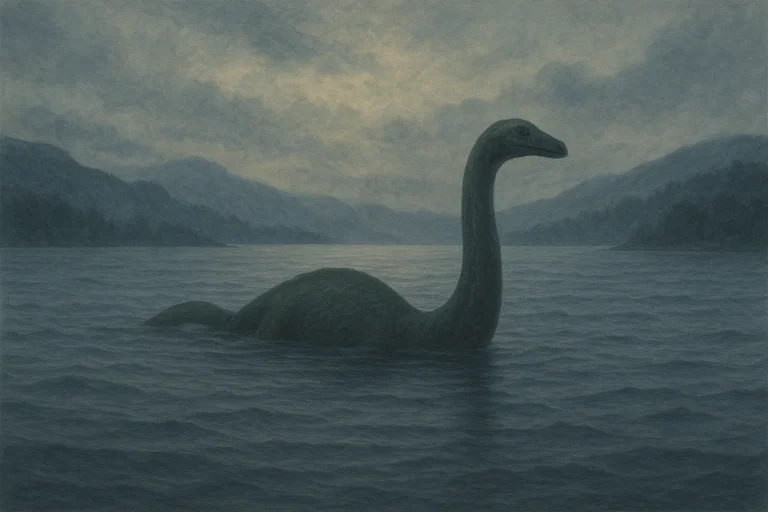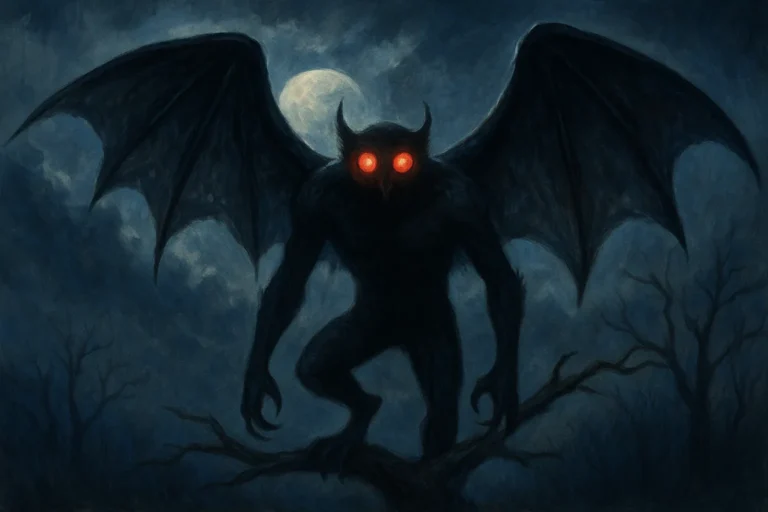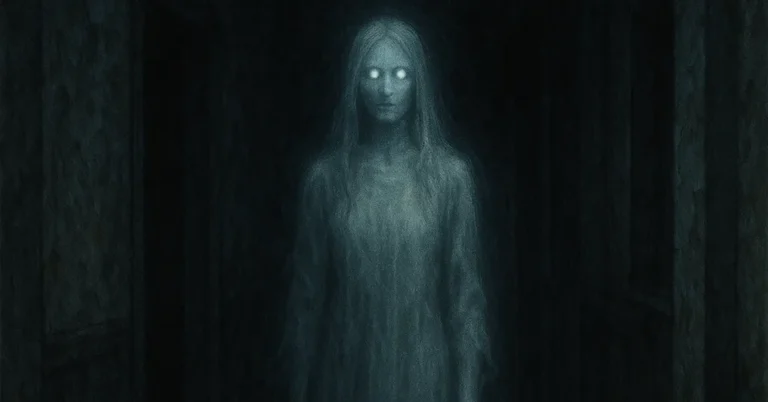Bigfoot: Tracking the Legend of North America’s Elusive Giant

You’ve heard the stories. Deep in the misty woods of the Pacific Northwest, something stirs. Heavy footsteps crunch through fallen pine needles. A low grunt echoes between the trees. Then — silence. When you finally look up, there’s nothing but branches swaying gently in the breeze. Was it just a deer… or something far more elusive?
For generations, North Americans have whispered tales of a mysterious, towering creature known as Bigfoot — or Sasquatch, depending on who’s telling the story. Described as a massive, ape-like being covered in dark hair and standing anywhere from 7 to 10 feet tall, Bigfoot has become one of the most iconic figures in cryptozoology.
But is this creature just a modern myth? Or could there be something more to the legend than meets the eye?
👣 Tracks Through Time
The name “Sasquatch” comes from the Halkomelem language spoken by the Indigenous Coast Salish peoples of British Columbia. Their stories of wild, hairy men of the forest long predate the popular term “Bigfoot.” In fact, Indigenous oral traditions across the continent feature similar beings — part man, part beast, and always just out of reach.
The modern Bigfoot phenomenon truly exploded in 1958, when a road construction crew in Bluff Creek, California, discovered massive footprints near their equipment. One of the workers, Jerry Crew, took a plaster cast of the tracks and showed it to the local newspaper. The press ran with it, and “Bigfoot” was born.
But perhaps the most famous piece of Bigfoot lore came nearly a decade later: the Patterson-Gimlin film. Shot in 1967, this short, grainy clip shows a large, bipedal creature striding through a clearing before briefly turning to look at the camera. To this day, it remains one of the most debated pieces of footage in cryptid history.
Was it a hoax, cleverly executed with a costume and shaky camerawork? Or did Roger Patterson and Bob Gimlin really capture a moment of the unknown?
🌲 The Wilderness is Watching
It’s no coincidence that most Bigfoot sightings occur in remote, densely forested areas — Washington, Oregon, Northern California, and British Columbia being the hotspots. These regions are known for their thick canopies, winding rivers, and miles of uninhabited wilderness. Perfect, some say, for a reclusive creature to hide in plain sight.
Many witnesses describe the same eerie sensation before a sighting: a sudden stillness in the forest, as if the birds and insects have gone silent. Then, a foul odor. A rustling in the undergrowth. And finally, a fleeting glimpse of something tall, shaggy, and humanoid moving quickly through the trees.
Some sightings last only seconds. Others, like the account of a group of campers near Mount St. Helens in 1924, are more dramatic. That night, the men claimed their cabin was attacked by a group of “ape-men” hurling rocks at the structure. The site became known as Ape Canyon, and the story still circulates in the area.
Are these encounters misidentified bears? Overactive imaginations? Or are they clues pointing to something we’re not supposed to understand just yet?
🧬 Flesh, Folklore, or Forgotten Species?
So what is Bigfoot — if he exists at all?
Some researchers believe the creature could be a relic population of Gigantopithecus, a massive ape species believed to have lived in Asia hundreds of thousands of years ago. Others suggest it might be a type of undiscovered hominid, perhaps related to early humans like Homo erectus. These ideas, while tantalizing, lack solid fossil evidence — at least so far.
On the other side of the debate are skeptics who argue that Bigfoot is a cultural phenomenon, not a biological one. They point to hoaxes, mistaken identity, and even wishful thinking. Indeed, some of the original Bluff Creek footprints were later claimed to have been faked by a man named Ray Wallace using wooden feet.
But even with these confessions, believers aren’t convinced. They argue that not all sightings can be explained away — especially those from credible sources, like forest rangers, police officers, and military personnel.
Could both sides be right in some way? Could there be a core truth buried beneath layers of myth, misidentification, and exaggeration?
🕯️ Searching for Shadows
Bigfoot isn’t just a legend — he’s an obsession for many.
There are full-time researchers, amateur trackers, and organizations like the Bigfoot Field Researchers Organization (BFRO) dedicated to documenting sightings and collecting evidence. They analyze hair samples, look for tree structures, and conduct night investigations with thermal cameras and audio recording equipment.
While no conclusive proof has emerged, the search continues. For every footprint that turns out to be a hoax, there’s another report that raises eyebrows. For every blurry photo, a new sound recording adds fuel to the fire.
It’s worth noting that belief in Bigfoot doesn’t necessarily require proof. For many, the appeal lies in the not knowing. The idea that, even in our GPS-mapped world, something ancient and wild could still be out there — watching, but rarely seen.
🌫️ The Enduring Mystery
So why does Bigfoot endure? Why, after decades of debate and countless investigations, does this creature still capture the public imagination?
Maybe it’s because he represents something we’ve lost. A connection to nature. A sense of the wild. A reminder that we’re not as in control of the world as we like to think.
Or maybe — just maybe — it’s because he’s real.
Until we find a body, a skeleton, or irrefutable footage, Bigfoot will remain just out of reach. And maybe that’s the point. Mysteries like this aren’t meant to be solved easily. They’re meant to be chased, debated, and passed down through campfire stories and whispered tales.
Because sometimes, the unknown is more thrilling than the truth.





